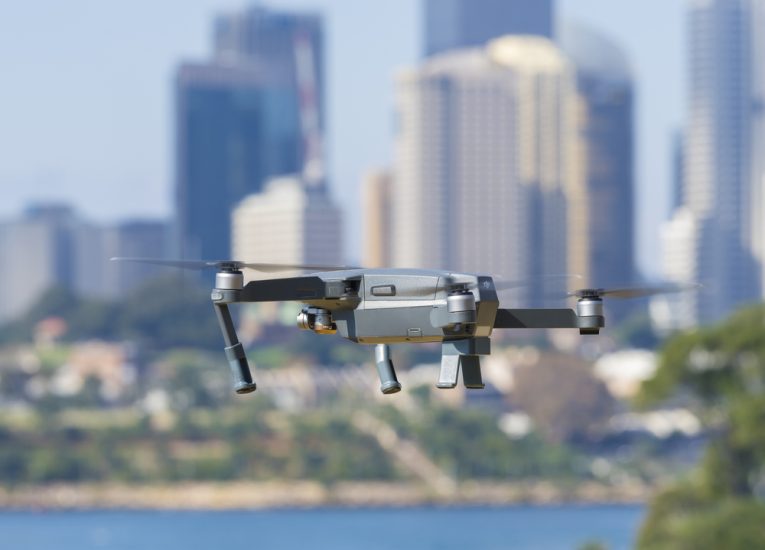Australia’s Civil Aviation Safety Authority (CASA), Airservices Australia and emerging aviation technology are working together to develop an Uncrewed Aircraft System Traffic Management (UTM) system.
The UTM will support the safe, economical and efficient management of uncrewed aerial systems (UAS) in Australian airspace, and the UTM ecosystem will make available a wide range of services to support the industry to thrive.
Australia has the opportunity to strategically develop a capability to maintain smooth coordination of drones (and Advanced Air Mobility in the future), to minimise the risks to people and the community. An UTM ecosystem will be able to assist the safeguarding of privacy and environmental concerns, as well as managing UAS noise.
To fully realise the economic, social and productivity benefits of scaled UAS operations, the department is taking a whole-of-government and industry collaborative approach.
The UTM ecosystem will comprise a number of capabilities to support a wide range of use cases for government, industry and the community. This includes:
- The integration of capabilities such as establishing airspace ‘no-fly-zones’ to safeguard privacy, environmental and noise concerns;
- Drone detection capabilities to hold negligent or malicious UAS operators to account; and
- Safety frameworks such as Australia’s Future Airspace Framework and the Remotely Piloted Aircraft Systems and Advanced Air Mobility Strategic Regulatory Roadmap.
Together, these capabilities will assist with the management of the emerging aviation technologies sector, so that Australia can harness its benefits, while reducing risks.
New research programmes have been announced.
“As part of a new iMOVE study, the University of South Australia is working with the Department of Infrastructure, Transport, Regional Development, Communications and the Arts, to investigate the benefits of increased drone use in Australia, including:
- Providing an overview of Australia’s drone sector and identifying lessons learnt from other countries;
- Assessing the demographic and geographic reasons behind increased drone uptake in Australia; and
- Identifying the key benefits and challenges to increased drone uptake for different communities.
“Findings from the study are anticipated for release in mid-2023, and will provide a greater understanding of the key benefits, and the factors or challenges affecting drone uptake in Australia. As the emerging aviation technologies sector continues to grow, there is expected to be significant benefits for Australia’s workforce and productivity, with up to 10,000 jobs projected to be created over the next 20 years (Deloitte Access Economics, 2020). For more information and to stay up-to-date on this project visit iMOVE’s website.”
Supported by the Asia-Pacific Economic Cooperation (APEC), and being undertaken by Mirragin RAS Consulting, the APEC project is examining best practices for remotely piloted aircraft (RPA) and will inform the development of an international framework for APEC economies.
“As RPA use continues to grow across the Asia-Pacific region, there is expected to be an increase in noise impact concerns. In particular, this can affect residents in urban areas where the use of drones is higher and more widespread for everyday activities, including home deliveries. Currently, there are no consistent international standards for the measurement or regulation of noise emitted by RPA. The project will compare the different approaches to manage RPA noise undertaken by APEC economies to identify innovative solutions and practices that should be captured in a new RPA framework. Establishing a framework will make transferring RPA noise measurements and approvals across regions easier and reduce the regulatory burden for operators and manufacturers. Findings from the report are anticipated for release in mid-2023. For more information on the project visit APEC’s website.”
Action plan
The department is developing a UTM Action Plan which will outline the whole-of-government approach to delivering the UTM in an iterative, proportionate and industry supportive manner.
The department continually considers lessons learnt from international jurisdictions, consultation sessions with industry representatives and wider government departments to ensure the UTM system is:
- Efficient and scalable to accommodate future increases in drone traffic;
- Consistent with whole-of-government policy objectives;
- Enabling operations based on a graduated approach to the risks and impacts to volumes of airspace;
- Interoperable with existing Air Traffic Management systems for traditional aircraft;
- Market driven to support competition and innovation; and
- Fair and transparent to all airspace users.
Government roles
The Department of Infrastructure, Transport, Regional Development, Communications and the Arts
The department continues to lead, coordinate the ongoing development and oversee the governance and policy objectives of a whole-of-government UTM ecosystem. This includes leading consultation processes across government and industry on the development of policy objectives of system design and market operation.
Airservices Australia
Airservices Australia is responsible for the development, deployment and management of a Flight Information Management System (FIMS), consistent with government policies and regulations. The delivery of UTM services will necessitate amending legislation and approvals issued to Airservices. The Australian Government will review the Air Services Act 1995 and the Civil Aviation Act 1988 to ensure they are appropriate to enable UTM to meet the Australian Government’s policy objectives, enable effective safety regulatory oversight by CASA, and enable Airservices to continue to provide services for the safety, regularity and efficiency of air navigation.
Civil Aviation Safety Authority (CASA)
Within the context of the development and management of the UTM ecosystem, CASA’s role as the independent aviation safety regulator will continue to have an important and evolving application to ensure the primacy of safety through continued regulatory oversight of the ATM system and the evolving UTM ecosystem. CASA will continue to work closely with Airservices and future UTM Service Suppliers (USS) to ensure the development and deployment of the UTM ecosystem and FIMS occurs consistent with the appropriate safety standards to meet government policy objectives. CASA continues to work closely with other government agencies and regulators that have responsibility for other requirements of the UTM ecosystem, such as security, policy, governance, market regulation, noise, privacy and competition to ensure consistency of applicable legal requirements.
For more information visit:
(Image: Shutterstock)




